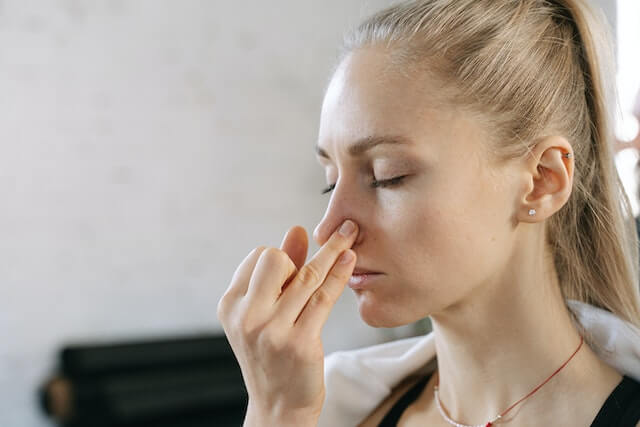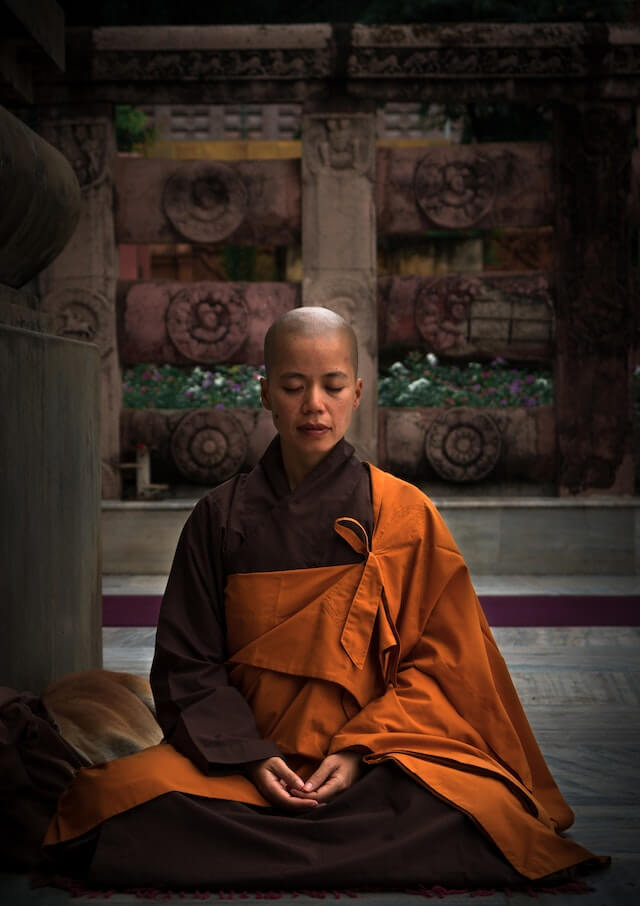Pranayama for Dementia: A Breath of Fresh Air
Dementia is a condition that affects millions of people worldwide, with symptoms that range from memory loss to a decline in cognitive abilities. While there is no cure for this condition, there are ways to manage its symptoms and improve quality of life. One such method is the practice of pranayama, an ancient form of yoga that involves controlled breathing techniques. In this article, we will learn how pranayama can benefit people with dementia, its various techniques, and tips.
Understanding Pranayama
Pranayama is a Sanskrit word that means “control of breath.” It is a yoga practice that involves controlling the breath in specific ways to achieve physical, mental and emotional benefits. Pranayama is a vital component of yoga and is considered one of the eight limbs of yoga. Pranayama can be practiced on its own or as a part of a yoga practice.
How Can Pranayama Help with Dementia?
Dementia is a progressive condition that affects various areas of the brain, including memory, thinking, and communication skills.
Pranayama can help people with dementia manage their symptoms and improve their quality of life by:
1. Reducing Stress and Anxiety: Pranayama can help people with dementia manage their stress and anxiety levels, which can contribute to better overall health and quality of life.
2. Improving Brain Function: Pranayama can help improve brain function by increasing blood flow to the brain, reducing inflammation, and improving overall brain health.
3. Enhancing Mood: Pranayama can help people with dementia manage their mood by releasing endorphins, which can help to reduce symptoms of depression.
Types of Pranayama for Dementia
Various types of pranayama can be practiced to benefit people with dementia. Here are a few of the most effective pranayama techniques:
1. Nadi Shodhana: Nadi Shodhana, also known as alternate nostril breathing, is a pranayama technique that involves inhaling and exhaling through one nostril at a time. This technique can help balance the left and right sides of the brain, improve brain function, and reduce stress and anxiety.
2. Ujjayi: Ujjayi breathing, also known as victorious breath, involves inhaling and exhaling through the nose while constricting the throat muscles. This technique can help improve lung capacity and reduce stress and anxiety.
3. Bhramari: Bhramari, also known as bee breath, involves inhaling through the nose and exhaling while humming like a bee. This technique can help reduce stress and anxiety and improve brain function.
Tips for Practicing Pranayama for Seniors
Here are some tips for practicing pranayama for people with dementia:
1. Practice in a quiet and peaceful environment to minimize distractions.
2. Practice at the same time every day to establish a routine.
3. Start with simple techniques and gradually progress to more advanced techniques.
4. Practice pranayama for short periods initially, and gradually increase the duration.
5. Seek guidance from a trained yoga instructor or healthcare provider before beginning any pranayama practice.
With the right guidance and dedication, anyone can experience the benefits of pranayama and enjoy a better quality of life.
How to perform Nadi Shodhana?

Nadi Shodhana is a pranayama technique that helps balance and purifies the nadis, or energy channels, in the body. It is also known as alternate nostril breathing. Here is a step-by-step guide on how to perform Nadi Shodhana:
Step 1. Sit comfortably in a cross-legged position, with your spine straight and your hands resting on your knees.
Step 2. Take a few deep breaths to help calm your mind and body.
Step 3. Using your right hand, bring your pointer and middle fingers to your forehead, and gently close your right nostril with your thumb.
Step 4. Inhale deeply through your left nostril, filling your lungs with air.
Step 5. Once you have inhaled fully, close your left nostril with your ring finger, and release your thumb from your right nostril.
Step 6. Exhale slowly and completely through your right nostril.
Step 7. Then, inhale through your right nostril, filling your lungs with air.
Step 8. Once you have inhaled fully, close your right nostril with your thumb, and release your ring finger from your left nostril.
Step 9. Exhale slowly and completely through your left nostril.
Step 10. This completes one round of Nadi Shodhana. Repeat for several rounds, switching sides each time.
Step 11. As you become more comfortable with the technique, you can increase the length of your inhales, exhales, and breath retention (the pause between inhales and exhales).
Step 12. Remember to keep your breath slow and steady throughout the practice, and to breathe only through your nostrils.
Nadi Shodhana can be a powerful tool for calming the mind and reducing stress, both of which are important for overall health and well-being. However, if you have any health concerns or medical conditions, it’s always a good idea to consult with your doctor before beginning any new exercise or pranayama practice.
How to perform Ujjayi?

Ujjayi pranayama, also known as ocean breath, is a type of breathing technique commonly used in yoga practices. This pranayama can be performed in a seated or lying down position, and it involves breathing deeply and smoothly through the nose while constricting the back of the throat to create a soft hissing sound.
Here are the steps to perform Ujjayi pranayama:
Step 1. Find a comfortable seated or lying down position, keeping your spine straight and shoulders relaxed.
Step 2. Close your eyes and take a few deep breaths through your nose, allowing your belly to expand on the inhale and contract on the exhale.
Step 3. Begin to inhale slowly and deeply through your nose, while constricting the muscles at the back of your throat to create a soft hissing sound in your throat. You can imagine you are fogging up a mirror or your glasses to create this sound.
Step 4. Keep your mouth closed and breathe out slowly through your nose, again constricting the back of your throat to create the same soft hissing sound.
Step 5. Continue to breathe deeply and smoothly in this way, allowing the breath to become long, slow, and even.
Step 6. You can practice Ujjayi pranayama for a few minutes to start, gradually working up to longer periods as you become more comfortable with the technique.
Step 7. Remember, as with any new exercise or practice, it is important to start slowly and gradually build up your practice over time. If you have any health concerns or medical conditions, it is always best to consult with your healthcare provider before starting a new exercise or breathing routine.
How to perform Bhramari?

Bhramari is a type of pranayama that involves making a humming sound while breathing.
Here are the steps to perform Bhramari:
Step 1. Sit in a comfortable position with your back straight and your eyes closed.
Step 2. Place your index fingers on your ears, with your thumbs resting on your forehead and the remaining fingers resting on your closed eyes.
Step 3. Take a deep breath through your nose, filling your lungs.
Step 4. As you exhale, make a humming sound, like the buzzing of a bee. Keep your mouth closed and let the sound vibrate in your throat.
Step 5. Focus on the sound and the vibration, letting it fill your mind and body.
Step 6. Repeat the process for 5-10 rounds, or as long as you feel comfortable.
Step 7. Remember to take slow, deep breaths and to keep your focus on the humming sound and the vibration. With regular practice, Bhramari pranayama can help reduce stress, anxiety, and tension, and promote feelings of calm and relaxation.
Is pranayama beneficial for Dementia patients? What does the research say?
Pranayama, or yogic breathing exercises, have been found to have several benefits for mental and physical health. However, research on the specific benefits of pranayama for dementia patients is limited.
One study published in the International Journal of Geriatric Psychiatry in 2016 found that practicing pranayama and other yoga techniques improved cognitive function and quality of life in patients with mild cognitive impairment (MCI), a precursor to dementia. The study concluded that “yoga and meditation can be a safe and effective adjunctive intervention for older adults with MCI.”
Another study published in the Journal of Alzheimer’s Disease in 2019 found that practicing pranayama and other mindfulness-based interventions improved cognitive function and reduced symptoms of depression and anxiety in patients with Alzheimer’s disease. The study concluded that “mindfulness-based interventions, including pranayama, represent a viable therapeutic approach for individuals with Alzheimer’s disease.”
However, it is important to note that these studies were small and more research is needed to fully understand the potential benefits of pranayama for dementia patients. It is also important to consult with a healthcare professional before starting any new exercise or wellness regimen, especially for individuals with pre-existing medical conditions.
Conclusion
Pranayama can be a powerful tool in helping those with dementia to find peace and tranquility. By practicing these simple breathing techniques, individuals can reduce stress and improve cognitive function, which can greatly enhance their quality of life. With regular practice, pranayama can become a valuable addition to any dementia patient’s care plan, providing a sense of calm and clarity that is truly invaluable.
